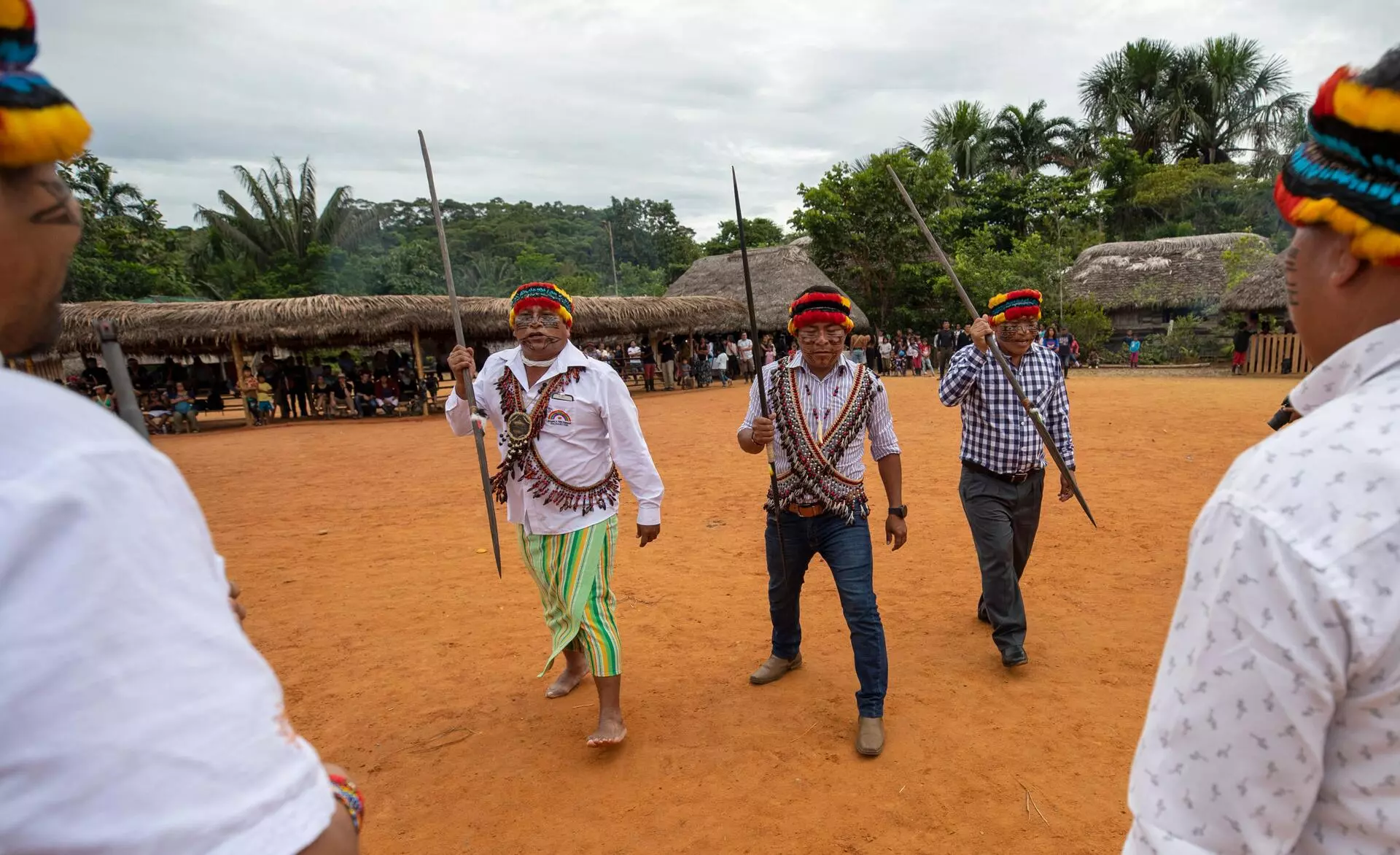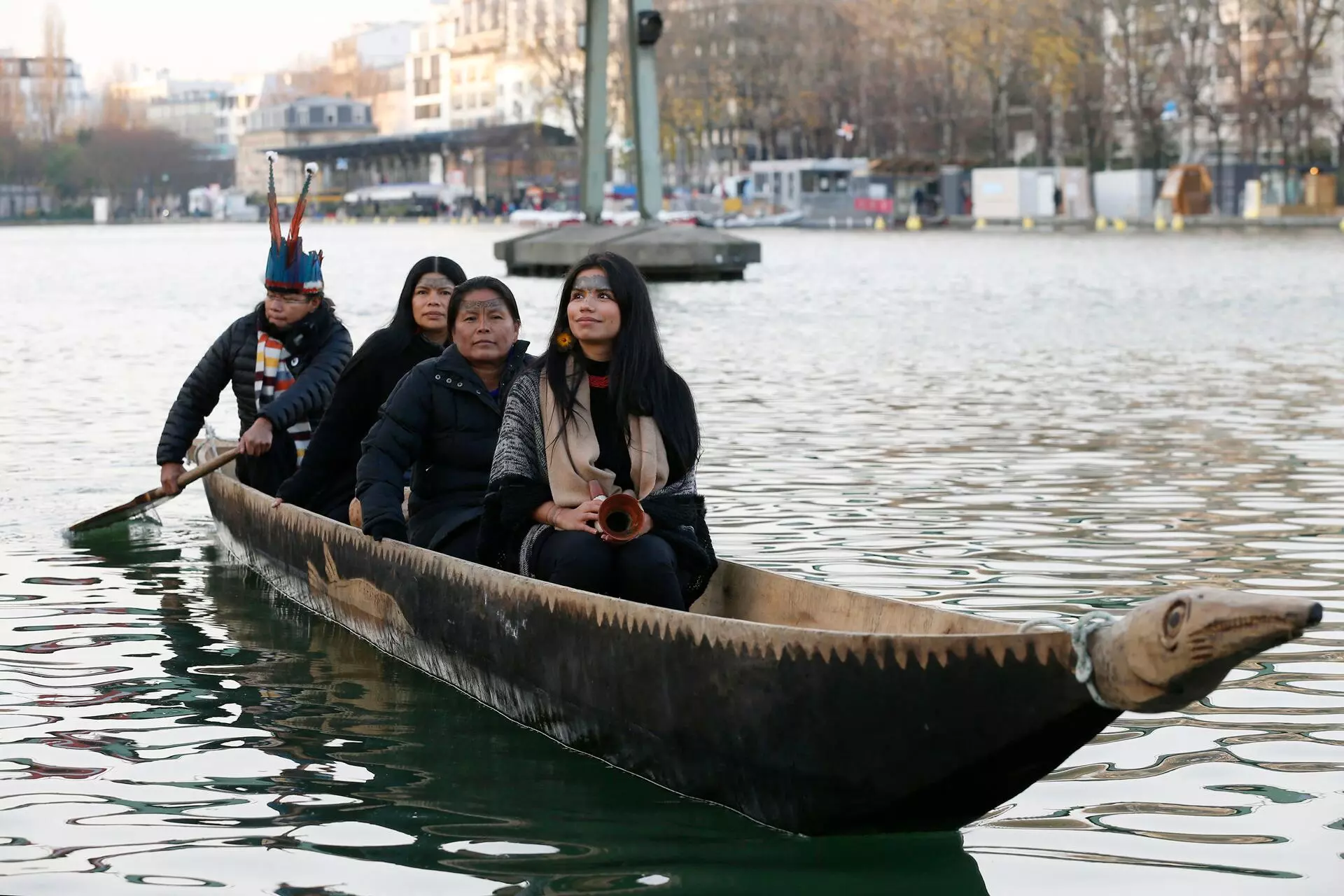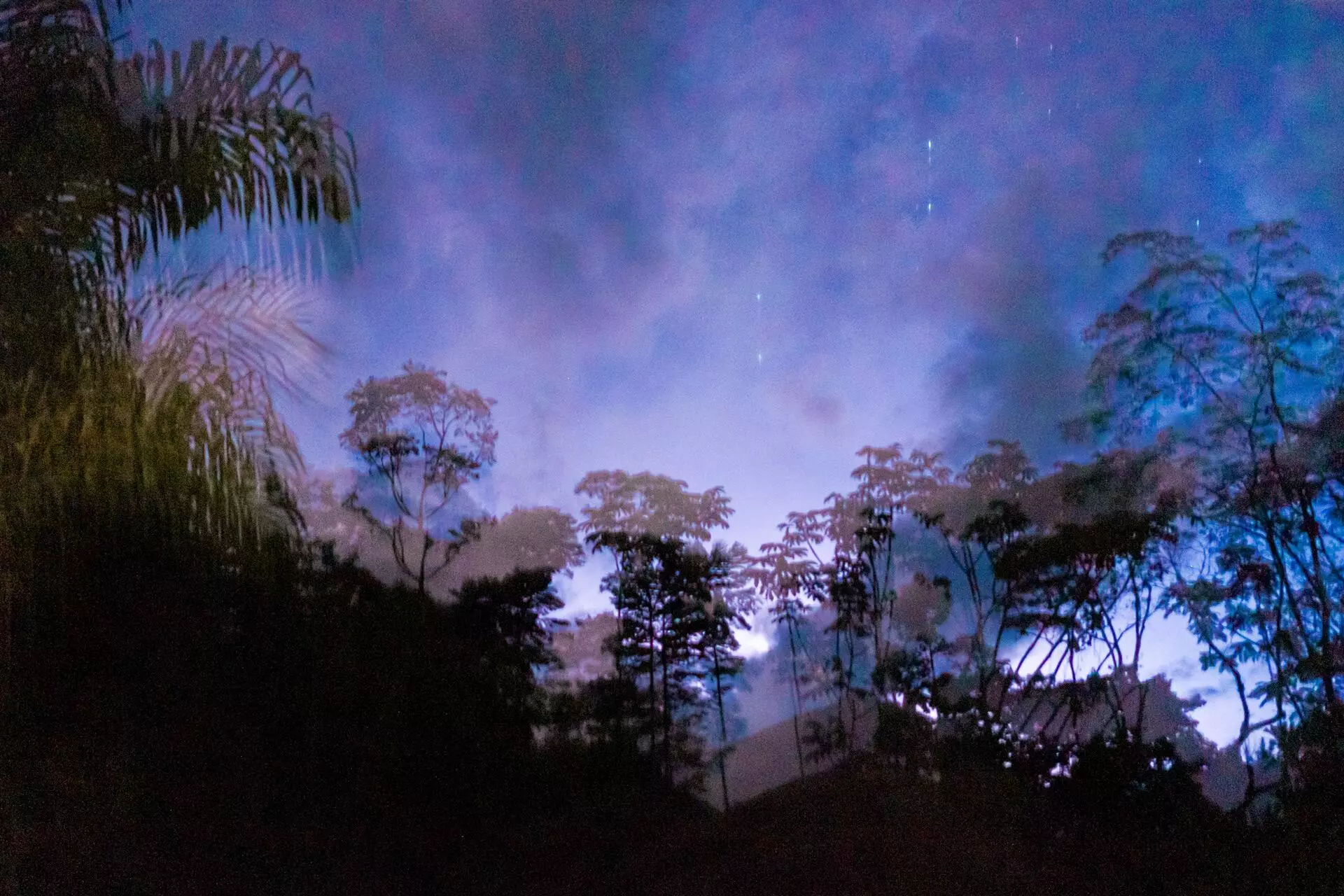The start of 2024 marked a milestone for the protection of the indigenous peoples of the Amazon region. After a long struggle in the judicial system, the Sarayaku people of Ecuador succeeded in getting the state to create a plan to agree to remove explosives that were buried by an oil company in their territory, and to ensure they will be consulted on any intervention. The victory marked a new chapter in the legal and political struggle of the Sarayaku people, who for more than 40 years have been successfully defending their rights against attempts by the Ecuadorian state and oil companies to open up their territory, located in eastern Ecuador, to the exploration and exploitation of fossil fuels. The victory is not limited to this people but echoes throughout the Amazon, opening up ways to keep the rainforest alive.
It is a historic episode in a long history of struggle and resistance. In 2012, the Inter-American Court recognised that, by authorizing oil exploration in Sarayaku territory, Ecuador had disregarded the right of the people to be heard in prior consultation and in a free and informed manner. Therefore, the Inter-American Court ordered the State to implement a genuine process of consultation with the people before considering giving the green light to any hydrocarbon project in the territory. This ruling is perhaps, even today, the most important one ever handed down by an international court on indigenous rights. However, the Ecuadorian government has still not fully complied with the ruling. So the Sarayaku people went to the Constitutional Court of Ecuador to demand that it do so. On 20 December 2023, the Constitutional Court ruled on the action brought by the Sarayaku people to demand that the state comply with the orders given by the Inter-American Court of Human Rights more than a decade ago.
This is not just any ruling or litigation. The Sarayaku case has become a symbol of the legal and political struggle of the peoples of the Amazon and other regions of the world, and has had a direct influence on other causes, from global activism against climate change to the spread of the idea of the rights of nature around the world. So this most recent chapter of history has great significance and can offer lessons for many movements and regions.

The Sarayaku propose the concept of Kawsak Sacha, or living forest, to ensure that their territory is managed with respect for all living beings. Photo: EFE/José Jácome
To understand the most recent chapter, we need to travel through time and space and land, more than two decades ago, in the heart of the Ecuadorian Amazon. In 1996, the Ecuadorian State granted an oil block concession to the Argentine company CGC. The area covered by the oil exploration and exploitation permit overlapped 65% with the territory titled to the Sarayaku people four years earlier. As the Inter-American Court stated in its judgment, the State granted the permit to CGC without complying with its duty to carry out a free, prior and informed consent (FPIC) consultation with the people. In 2002, oil company workers, accompanied by the Ecuadorian armed forces, entered the Sarayaku people’s territory, once again without their permission.
It was then that the Sarayaku people launched a legal and political defense campaign to defend their rights and those of their territory. Through a national and international strategy, which has combined legal actions and social mobilizations, the Sarayaku people have systematically opposed the entry of companies and the exploitation of oil in their territory. Right from the outset, the leaders and spokespersons of the people made it clear that the defense of the right to consultation was not the end, but a means, of their resistance. Their aim is to defend the living forest, whose rights are inseparable from the rights of human beings. In other words, oil exploitation not only contravenes FPIC, but the right of the land itself to remain whole and to continue to regenerate human and non-human life. The Sarayaku campaign has aimed to protect what in Kichwa they call kawsak sacha: the living jungle inhabited and animated by animals of all kinds, trees with huge canopies, variegated fungi, multicolored plants, the Bobonaza River and the other waters, mountains and rocks of the jungle, all of which are seen as living things by the Sarayaku. Hence, the decisions of the people are made after consulting not only all its members but also the living jungle.
With the support of organizations such as the Pachamama Foundation and lawyers such as Mario Melo, the people initially went before the Ecuadorian courts to defend their rights and those of their territory. However, the CCG continued to move forward with oil exploration, even burying nearly a ton and a half of explosives that they hoped to detonate as part of the prospecting work. As a result, the people and their lawyers, with the support of CEJIL, took the case to the Inter-American Human Rights System, first to the Commission (2003) and then to the Court (2004). As is usual in this type of proceedings, the Court took several years before examining the case in depth. When it finally did so, between 2011 and 2012, it set a global precedent for the protection of indigenous rights.
One of the unprecedented events of the proceedings before the Inter-American Court is that it included not only a public hearing at the Court’s headquarters in Costa Rica, but also the Court’s first visit to an indigenous territory. At the hearing which took place in San José, Sabino Gualinga, a shaman and Sarayaku spiritual leader, spoke, explaining how the unconsulted entry of the oil company and the Ecuadorian army violated the rights and led to the displacement and even the death of members of the Sarayaku people and hundreds of other living jungle beings. During the Court’s visit to the Sarayaku Amazonian territory, the judges asked questions and listened to the people’s statements.
In 2012, the IACHR ruled in favor of the Sarayaku people and condemned the Ecuadorian State to issue norms guaranteeing the right to consultation and to remove the explosives, as well as to apologize and pay compensation to the Sarayaku people. Although successive governments half-complied, presenting a public apology and paying compensation, they never removed the explosives, nor did they issue norms regulating and protecting the right of indigenous peoples to FPIC.
Unlike other litigants who sometimes demobilize prematurely when they win a landmark ruling, the Sarayaku people never stopped campaigning for the protection of their lives and the living forest. Since then, their efforts have had four features that offer lessons for other cases and movements.
First, the campaign continued to combine legal and political strategies. The commitment to the process before the Inter-American System was always accompanied by political advocacy activities, from the decisive participation of Sarayaku leaders in the movement and in national organizations (such as CONAIE, the Confederation of Indigenous Nationalities of Ecuador) and regional ones (such as COICA, the Coordinator of Indigenous Organizations of the Amazon Basin). In fact, it was through their connection with CONAIE that the Sarayaku people contributed to the incorporation of the rights of nature in the Ecuadorian Constitution of 2008, the first in the world to recognize the rights of non-human beings.
Second, while remaining rooted in their territory and in their cultural and spiritual tradition, the Sarayaku people have made creative use of communications and digital technologies. Through documentaries, videos, blogs, web portals, webinars, virtual petitions and other highly effective and creative formats, they have captured the attention of a growing audience of national and global partners.
Third, the Sarayaku people have built bridges and influenced new social movements, from the mobilization of the youth for climate action, to the rising tide of campaigns and cases for the rights of nature. A particularly eloquent demonstration of the impact and expansion of Sarayaku activism was the presence of Sarayaku women leaders at the decisive climate change summit in Paris in 2015, where they captured the world’s attention by paddling down the Bassin de la Villette in a canoe built in Sarayaku territory and transported to Paris for the occasion.

In 2015 the Sarayaku community built the “Canoe of Life” and transported it from Ecuador to Paris to showcase the Kawsak Sacha at COP21. Photo: Thomas Samson/AFP
The Sarayaku strategy was therefore not limited to legal channels. This does not mean that it has not persisted in the use of the law. Indeed, the most recent chapter of their litigation and the decision of the Ecuadorian Constitutional Court offers a fourth lesson for other cases and movements: in order for legal victories not to be confined to paper, movements and their lawyers must continue to press and litigate for the enforcement of favorable rulings. This is what happened in the Sarayaku litigation, as shown by the appeal that the people and their legal advisors presented to the Constitutional Court to enforce the orders of the Inter-American Court.
The Constitutional Court of Ecuador ordered the Ministry of Women and Human Rights to lead compliance with the remaining orders of the Inter-American Court, through a procedure that respects FPIC. The consultation with the people will revolve around two issues: the removal of explosives from the territory and the regulation of FPIC in Ecuadorian law. The Sarayaku people will begin to evaluate with the State how to remove the explosives that, more than two decades later, are still buried in Sarayaku territory, preventing the people and non-human beings living in the jungle from circulating and flourishing. This consultation exercise should evaluate the participatory processes that have been carried out with the Sarayaku people since 2012. In turn, the Ministry should carry out an inter-institutional coordination process so that a national FPIC law is enacted to ensure that no other indigenous peoples in Ecuador have their rights to consultation and consent violated.
In the coming months, the Sarayaku people will embark on a consultation process for the construction of a program to guarantee the removal of explosives and the cleanup of their territory. As they have done from the beginning, they will ask for recognition that their territory is a living, intelligent, conscious being with rights, as José Gualinga, one of the authors of this text, argued in the interview for the series that Sumaúma publishes with the More than Human Rights (MOTH) Project of New York University. The presence of explosives not only impedes the movement of humans throughout the territory, but has also affected the non-human beings that coexist with the Sarayaku people in the Amazon. Hence, the recognition of the living forest is one of the forms of reparation that the Sarayaku have requested and will continue to demand from the Ecuadorian State.
This process will undoubtedly be a watershed moment in the mobilization of the Sarayaku people. In the midst of the triple planetary crisis –climate change, biodiversity and pollution– the case may not only continue to elicit answers, but to raise new questions, such as: How do we genuinely consult and listen not only to human groups, but also to the more-than-human world? And how do we recognize, finally, that humans’ welfare and rights depend on the welfare and protection of the rights of this network of life we are a part of?
These are some of the questions that the Sarayaku people are asking, not just of the judicial system and the state, but of all people. Urgent questions that require urgent answers.
***
José Gualinga Montalvo is an advisor to the Tayjasaruta (Sarayaku Governing Council) and was its Tayak Apu (president). He is also the coordinator of the Kawsak Sacha initiative
Carlos Andrés Baquero-Díaz is a researcher at the Center for Human Rights and Global Justice at New York University. He is also part of the coordinating team of the More than Human Rights project
César Rodríguez-Garavito is Professor of Clinical Law and Chair of the Center for Human Rights and Global Justice at New York University School of Law. He is the founding director of the Earth Rights Advocacy Clinic, the Future of Rights and Governance Program, the Climate Litigation Accelerator, and the More Than Human Rights (MOTH) project at NYU Law
More-than-Humans is a partnership project between SUMAÚMA and More Than Human Rights (MOTH), an initiative of the Earth Rights Advocacy Clinic at New York University (NYU) School of Law.
Fact-checker: Plínio Lopes
Translation into portuguese: Paulo Migliacci
Spell check (portuguese): Valquiria Della Pozza
English translation: Charlotte Coombe
Spanish translation (captions): Meritxell Almarza
Photo Editor: Lela Beltrão
Layout and finishing: Érica Saboya
Editors: Viviane Zandonadi (editorial workflow and copy editing), and Talita Bedinelli (coordination)
Director: Eliane Brum

The Sarayaku defend the idea that their territory is a living being, one that is intelligent, conscious and has rights. Photo: Misha Vallejo






